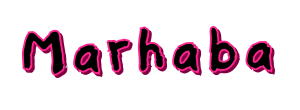What does it mean to have “damaged hair”? Hair damage refers to the physical or chemical breakdown of hair structures and their major components.
These include the cuticle, cortex, medulla, and keratin proteins . Factors include excessive heat, abrasion during brushing, and even the use of chemicals and exposure to UV rays.
Treating Heat Damaged Hair
Let’s start by saying that hair is not a living tissue and cannot heal , as it has no regenerative capacity. Therefore, in addition to requiring a lot of patience, it is necessary to act on prevention.
To make them smoother and more flawless, it is better to rely on quality tools such as the Dyson Airstrait straightener which acts in a dual function only with air , reducing the frizz effect and hiding baby hair for a natural and tidy result.
Like other innovative products in the range, this straightener features intelligent temperature control : glass microsphere thermistors measure the temperature of the airflow up to 16 times per second to prevent damage from excessive heat and protect the hair’s natural shine.
Don’t forget products such as heat-protective sprays , to be applied not only before or after drying but also at the seaside, where the hair is put to the test by UV rays and salt water.
Dealing with bleach-damaged hair
Often, to obtain a desired color, hair is subjected to a real trauma: bleaching .
A blessing and a curse for hairdressers, this is a process that involves the oxidation of melanin, giving hair lighter shades of color. Especially in cases where you start from a dark base, more sessions may be necessary.
To avoid a dull and lifeless appearance and to nourish dry hair – the first symptom of aggressive bleaching – it is best to use specific shampoos , which also prevent yellowish tinges.
Other effective, more natural treatments are those based on coconut oil and avocado . The nourishing properties of these ingredients make hair stronger and look healthy and well-groomed. Excellent if applied with masks and compresses.
Other tips not to forget
There are many tips that you should not forget to have healthy and strong hair. In addition to a healthy and balanced diet , which is necessary for the entire body, here are some tips to keep in mind.
Water for example can make a big difference in the health of your hair. How many times have you used the same products, the same drying method but gone to the mountains and after styling found your hair more beautiful?
If it contains too much limescale, “harder” water can reduce the shine and silkiness of your hair .
This happens because hair with open cuticles absorbs limescale, which settles on the surface, making it dull and less vital. What measures should be taken? For those who want a radical solution, purchasing a water softener can eliminate these minerals from domestic water.
These include the cuticle, cortex, medulla, and keratin proteins . Factors include excessive heat, abrasion during brushing, and even the use of chemicals and exposure to UV rays.
In this article, we will look at how to effectively treat hair damaged by both heat and chemicals.
Treating Heat Damaged Hair
Let’s start by saying that hair is not a living tissue and cannot heal , as it has no regenerative capacity. Therefore, in addition to requiring a lot of patience, it is necessary to act on prevention.
To make them smoother and more flawless, it is better to rely on quality tools such as the Dyson Airstrait straightener which acts in a dual function only with air , reducing the frizz effect and hiding baby hair for a natural and tidy result.
Like other innovative products in the range, this straightener features intelligent temperature control : glass microsphere thermistors measure the temperature of the airflow up to 16 times per second to prevent damage from excessive heat and protect the hair’s natural shine.
Don’t forget products such as heat-protective sprays , to be applied not only before or after drying but also at the seaside, where the hair is put to the test by UV rays and salt water.
Dealing with bleach-damaged hair
Often, to obtain a desired color, hair is subjected to a real trauma: bleaching .
A blessing and a curse for hairdressers, this is a process that involves the oxidation of melanin, giving hair lighter shades of color. Especially in cases where you start from a dark base, more sessions may be necessary.
To avoid a dull and lifeless appearance and to nourish dry hair – the first symptom of aggressive bleaching – it is best to use specific shampoos , which also prevent yellowish tinges.
Other effective, more natural treatments are those based on coconut oil and avocado . The nourishing properties of these ingredients make hair stronger and look healthy and well-groomed. Excellent if applied with masks and compresses.
Other tips not to forget
There are many tips that you should not forget to have healthy and strong hair. In addition to a healthy and balanced diet , which is necessary for the entire body, here are some tips to keep in mind.
Water for example can make a big difference in the health of your hair. How many times have you used the same products, the same drying method but gone to the mountains and after styling found your hair more beautiful?
If it contains too much limescale, “harder” water can reduce the shine and silkiness of your hair .
This happens because hair with open cuticles absorbs limescale, which settles on the surface, making it dull and less vital. What measures should be taken? For those who want a radical solution, purchasing a water softener can eliminate these minerals from domestic water.
In general, it is good to treat your hair with care, perhaps every now and then using masks or compresses, even with natural ingredients, and applying specific oils to protect your scalp and ends .








